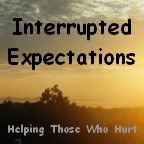I'm talking about The Global Genes Project World Rare Disease Day on Feb. 28. From their website, "Imagine lawyers in courtrooms, business executives in boardrooms, state legislators and others from all walks of life wearing jeans the week before or Friday before World Rare Disease Day – all to show their support for those affected by rare disease worldwide. www.rarediseaseday.us."
My first real introduction to rare diseases was in the early 1990s through Hannah's Prayer Ministries where I met many amazing families, some struggling to grow their families yet facing infertility due to the rare conditions faced by the husband or wife, others crushed under the grief that comes to parents whose children are diagnosed with rare, life-threatening (often "incompatible with life") diseases. At that point the only resource I knew to share with families were National Organization for Rare Disorders (NORD) and NATHHAN National Challenged Homeschoolers Associated Network.
Little did I know then how personally Rare Diseases would eventually touch our home. When our daughter was two we endured many stressful and frightening months as she was being evaluated for a specific form of dwarfism with many accompanying complications (something that's never fully been "ruled out" but because her growth has improved dramatically, investigation was eventually put on hold unless/until we have additional reason for concern). Then five months ago we learned of my XMRV diagnosis, a retrovirus that may turn out to be very wide-spread but currently has only been diagnosed in a few hundred cases because the testing is so new. I've lived with it for at least 19 years, possibly much longer, but doctors are just beginning to learn anything about my condition and still have no idea how to manage my care.
If you have a illness that "no one has heard of" it used to be that you might go your whole lifetime without ever connecting with someone else who knew your struggles personally. Now the internet makes it possible to find so much information (sometimes "too much" information!) and support communities abound. In honor of World Rare Disease Day, I want to point to the personal websites of a couple of families I regularly pray for, even as I'm inspired by their perseverance under trying times:
Heather (you might know her as "Especially Heather") is an amazing woman who has gone through more than seems fair for any one lifetime, yet her smile continues to shine for Jesus. Her story includes brain cancer and the removal of a tumor "the size of a nine iron" in 2007. But it's her daughter Emma's story that I want to point out today. This little girl was written off by the medical community before she was ever born but proved them all wrong with a lusty cry upon birth in 2001. She had a heart/lung transplant at just 5 months of age, has both Complex 1 and Complex 3 Mitochondrial Myopathy, is autistic, and is now waiting for a second heart transplant due to Transplant Related Coronary Artery Disease. As of this week, Emma was back in ICU running a fever of unknown origin and could use our prayers!
While we have yet to meet in person, though I've talked with their mother by phone and facebook and know their cousin well, Addi and Cassi Hemple are a couple of local girls who I've mentioned in the past. Living here in Reno, these 5-year-old twins who suffer from Niemann Pick Type C disease (childhood Alzheimer's) hold an especially tender spot in my heart.
I'm running out of time and energy to post other stories right now, but I couldn't close this short list of stories without mentioning the wonderful folks at the Whittemore Peterson Institute who are working nearly around the clock to find answers about XMRV for those like me who have already been identified and the potentially thousands or even tens of thousands (thus no longer making it "rare"!) more who are waiting for answers! Won't you please join me in wearing your jeans to show your hope in finding answers in genes???
What does wearing jeans stand for?
In the United States, a disease is considered rare if it affects fewer than 200,000 Americans. According to statistics from the National Institute of Health (NIH), there are thought to be nearly 7,000 life-threatening and heavily debilitating conditions affecting nearly 30 million Americans (1 in 10 people or 10% of the population). Despite the infrequency of each rare disease, the total number of rare disease patients in the United States is equivalent to the total populations of New York and New Jersey combined.
In the European Union's 27 member states, it is estimated that rare disease patients make up between 6% and 8% of the total EU population, or between 27 and 36 million people. This is equivalent to the total combined populations of the Netherlands, Belgium and Luxembourg.
Beyond the US and EU, few reliable rare disease statistics exist for other countries. Some alarming statistics that are currently available include:
* More than half of the 30 million patients in the United States affected with rare disease are children
* Approximately 15 million Americans have rare diseases for which there still is no approved treatments and no research in progress
* Approximately 80% of rare diseases are attributed to genetic defects, many which are untreatable and life-threatening
* In the 25 years since the Orphan Drug Act of 1983 was signed into federal law, the FDA has only approved approximately 350 treatments for all rare diseases combined
Are you or someone you love impacted by rare disease? I would be honored to pray for you if you would please share your story in the comments section here. I'm always thrilled to find new links to personal stories and support sites/organizations as well, so please tell me about the resources that have most helped you!





